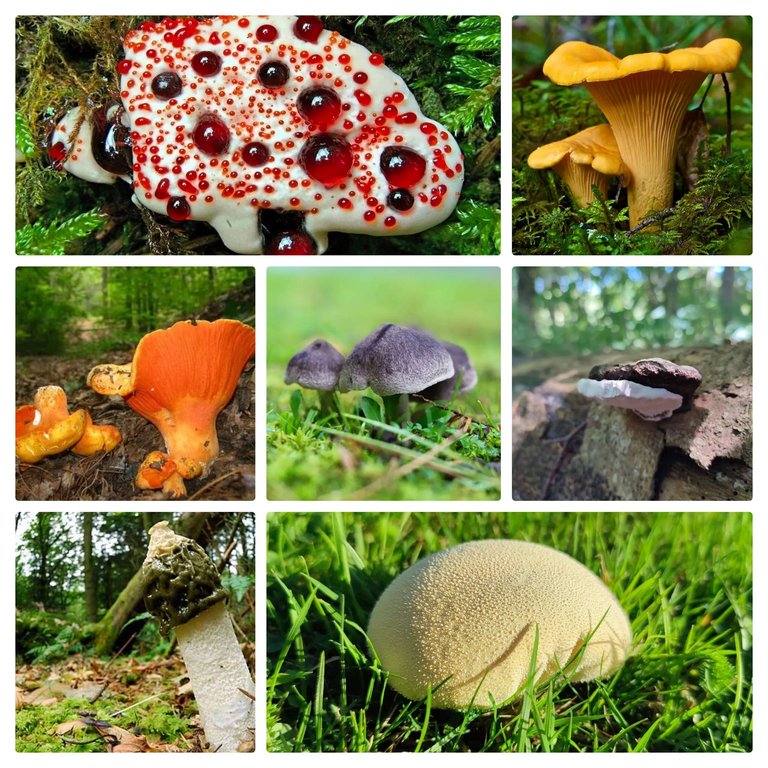

I’ve always loved how mushrooms just appear, like little surprises tucked under leaves, poking out of logs, or lining the edges of old stumps after a rain.
Some are bright, some smell strange, and some vanish overnight.
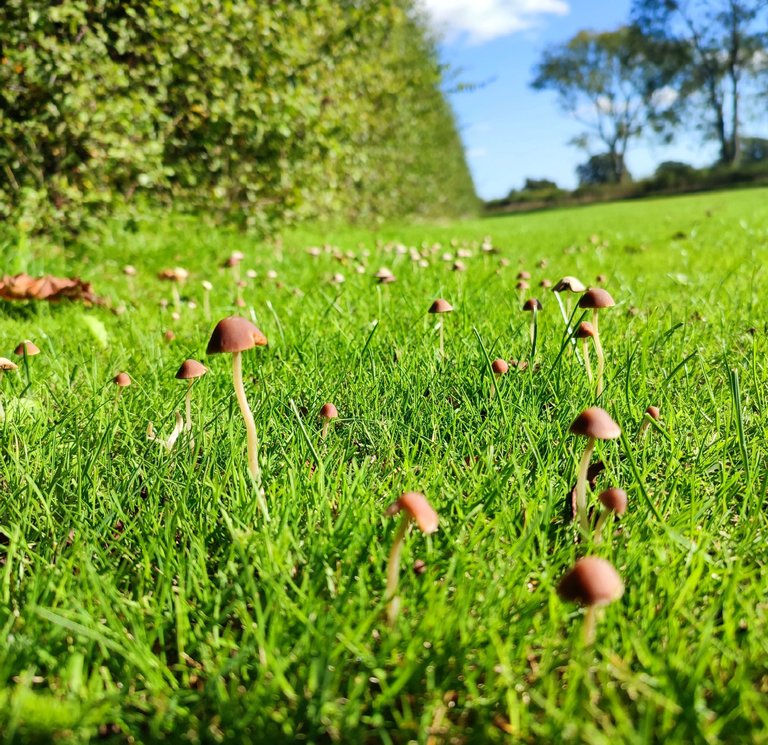
They’re so different from one another, but each one’s doing something important.
Here’s a breakdown of the main “types” of mushrooms, most I’ve come across while foraging or just walking in the woods.
Not by their species, but by how they live, what they do, how they feed, and the role they play in the land around them.
🧹 1. The Decomposers.
These ones help break things down, dead wood, fallen leaves, the stuff most people step over. They return nutrients to the soil and keep things cycling. Without them, the forest floor would just pile up with rot and not much would grow.
Examples I often see:
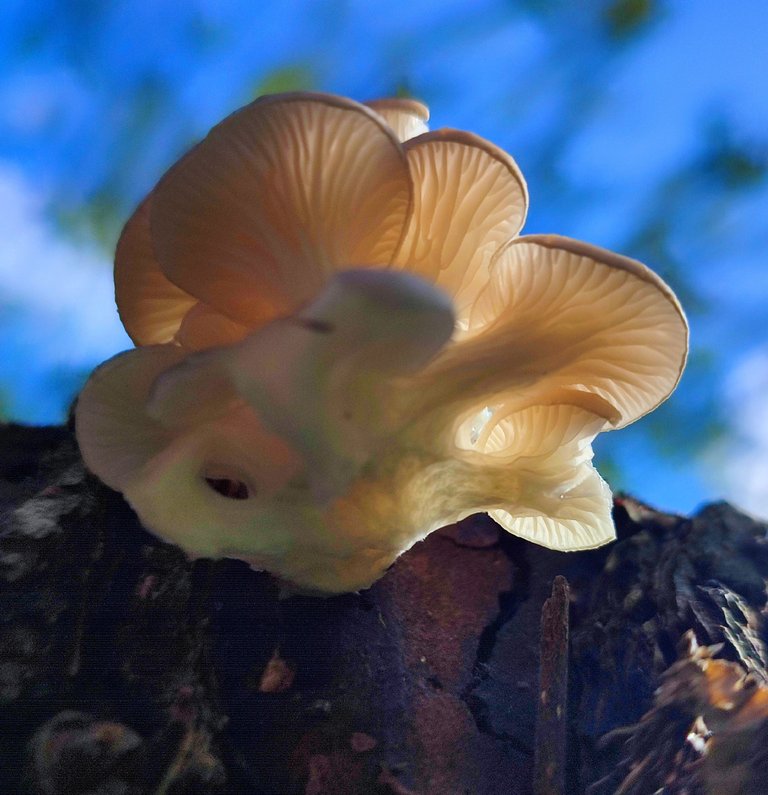
Oyster mushrooms – Pale, fan-shaped, and one of the easiest to spot on logs.
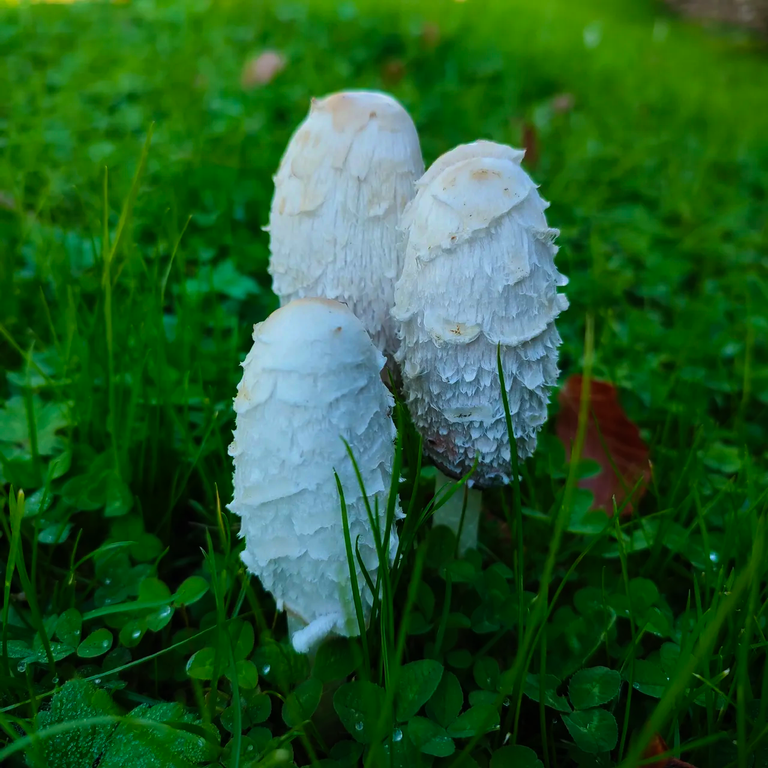
Shaggy ink caps – Tall and white with shaggy caps; they melt into black goo as they age (kind of wild to watch).

Rosey Bonette - A small, pinkish mushroom that grows on leaf litter. It’s a decomposer, helping break down dead leaves and twigs to nourish the forest floor.
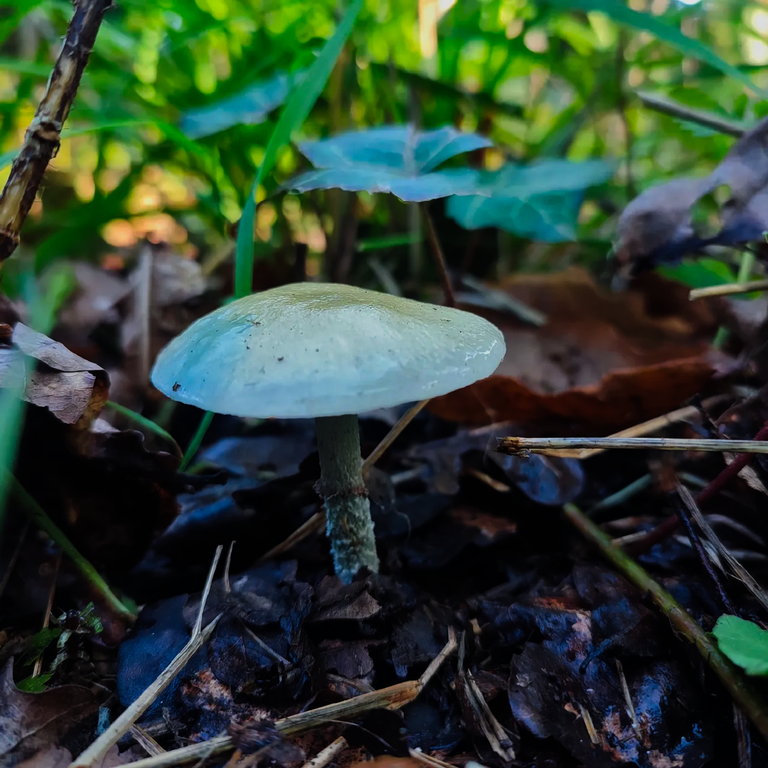
Verdigris Roundhead - A shiny blue-green mushroom with a round cap. It’s a decomposer, growing on wood and helping break down dead trees.
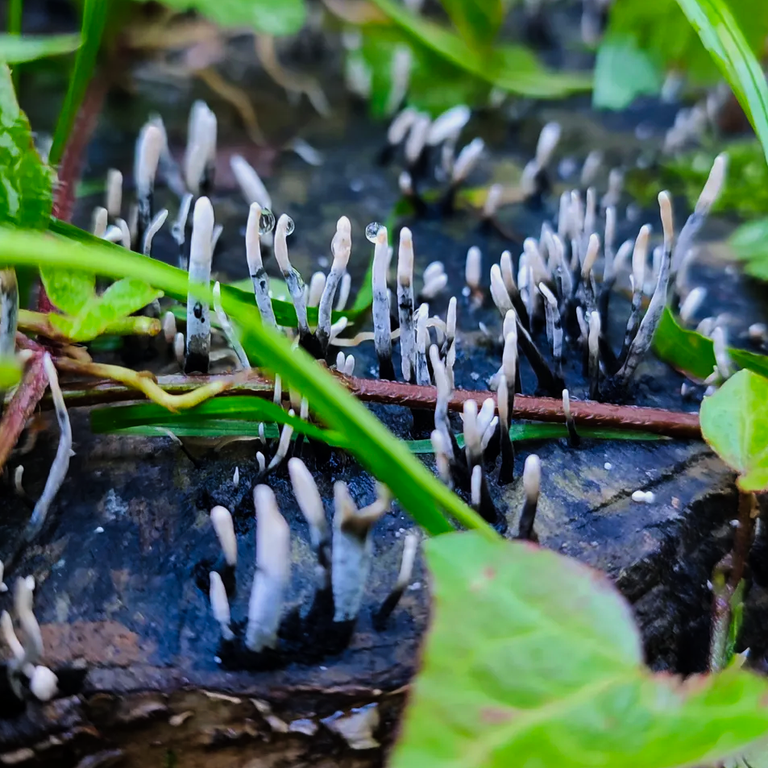
The Candlesnuff Fungus (Xylaria hypoxylon)
It grows on dead wood, often looking like tiny blackened candles or burnt matches sticking up from logs or stumps. It helps break down wood, returning nutrients to the forest.

The False Funnel (Clitocybe rivulosa)
It grows on leaf litter or grassy areas, breaking down dead plant material to help recycle nutrients into the soil. It has a funnel-shaped cap but is toxic, so best to admire from afar!
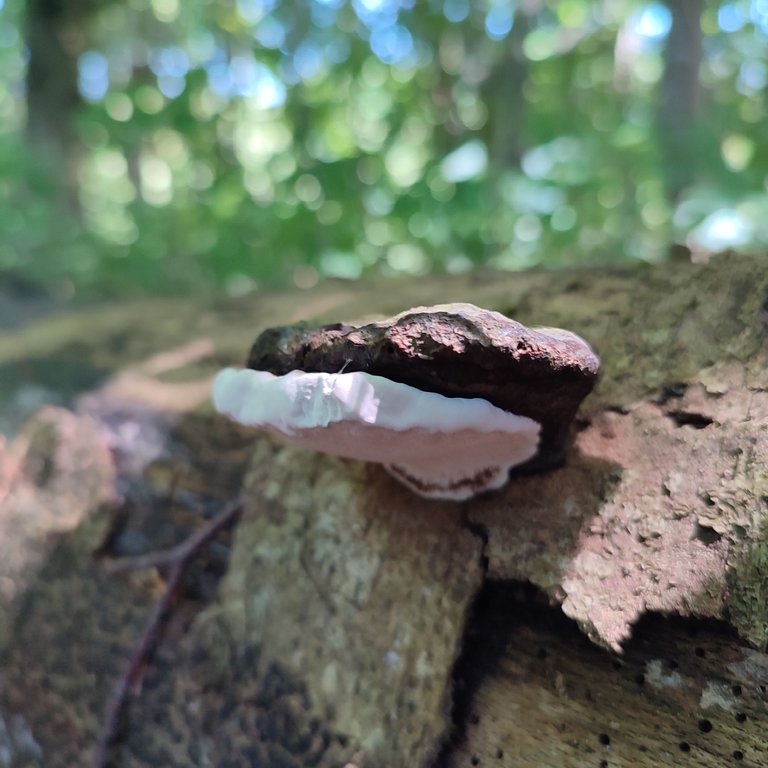
Artist’s Conk (Ganoderma applanatum)
A woody bracket fungus that grows on dead or dying trees, breaking down tough wood. The white underside bruises brown, letting people "draw" on it, hence the name.
🌳 2. The Root Partners (Mycorrhizal.)
These mushrooms form deep relationships with trees and plants. They trade sugars and minerals underground, helping each other out. You’ll usually find them growing near specific trees, not on dead wood.
Ones I look out for:

Lactarius pyrogalus (hazel milk-cap) grows under hazel trees in spring and autumn. It releases milky drops when cut and forms a helpful partnership with tree roots.
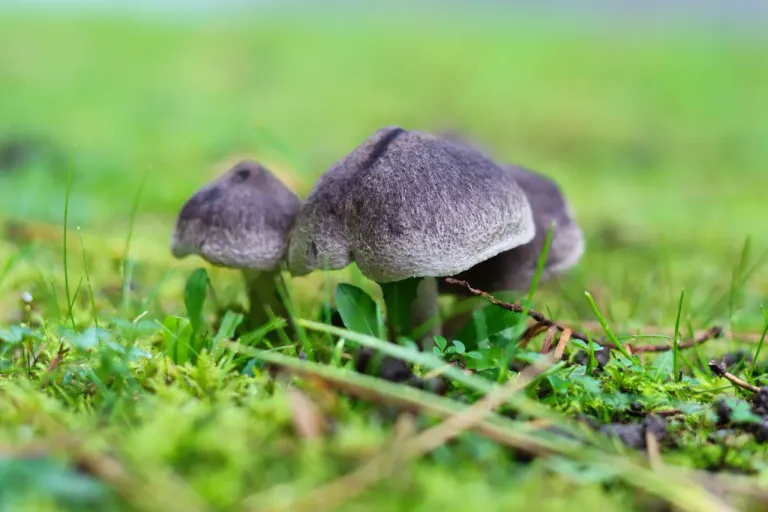
Grey Knight , grows in pine forests, forming root partnerships with trees and sporting a grey, scaly cap.

Image source: Out Grow
Chanterelles – Golden-yellow and fruity-smelling. They like oak, birch, and pine forests.
https://www.thespruceeats.com/thmb/Yps45b37hg27yuxBkuv2xCGW3E8=/750x0/filters:no_upscale():max_bytes(150000):strip_icc():format(webp)/GettyImages-475150545-1a11dccd4c804c859d1f1a2d3f525070.jpg
Image Source: The Spruce Eats
Porcini (Ceps) – Thick and meaty, usually under conifers or chestnuts.

Imager source: The Wildlife Trust
Fly agaric – The red one with white spots. It’s toxic, but iconic. Usually near a birch or a pine.
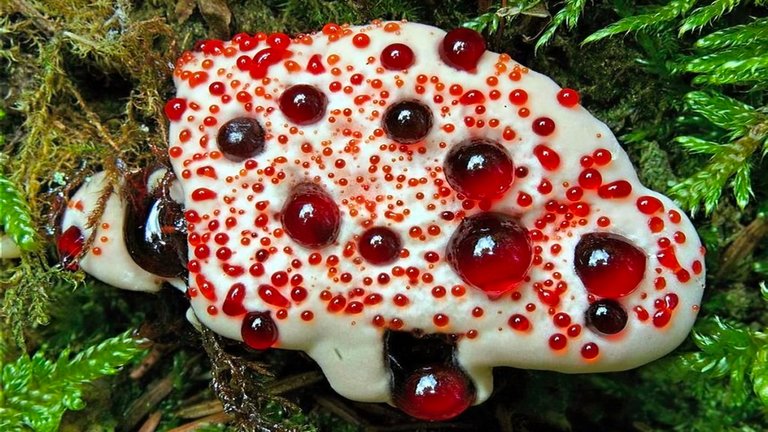
Image Source: The Average
The Bloody Tooth Fungus (Hydnellum peckii)
It forms a mutual partnership with the roots of conifer trees, helping them absorb nutrients while receiving sugars in return.
🦠 3. The Parasites
These grow on living things, trees, insects, or even other fungi. Some are harmful, like the ones that rot trees, while others are kind of fascinating.
Curious ones I’ve seen:

Image Source: First Nature
Honey fungus – Looks harmless, but is a tree killer. Sometimes glows faintly at night.
Cordyceps – The ones that grow out of insects. Weird and a bit unsettling, but amazing in their own way.

Image Source: iNaturalist
Lobster mushroom – Not really a mushroom on its own, but a fungus that covers another mushroom and turns it bright orange.
💨 4. The Spore Slingers.
All mushrooms make spores, but some have gotten creative with how they spread them. Some puff, some stink, some drip. I think of these as the show-offs.
A few that stand out:

Puffballs – Round and soft, they puff out spores if you give them a little tap.

Image Source: Woodland Trust
Stinkhorns - Smell awful, but flies love them and carry the spores off.
So... Mushrooms are all so different because they each have their job. Some break things down, some help trees grow, some take over other things, and some just want to spread their spores as far as they can.
The more I learn, the more I see how everything is connected.
When I’m out mushroom hunting, I ask myself, “What’s this one busy doing?” It makes me appreciate them even more.
Have a wonderful day!
Mariah 😊💗
All photos are mine except those with sources.
My share to @fungifriday by @ewkaw.
Kingdom of mushrooms is beautiful, so many cute ones! But my heart belongs to chanterelles ❤️ Love them - looking at them, collecting, eating, cooking...
They are and I love them too! 😊
Absolutely, the world of fungi is full of mystery and beauty, and the way you classified them based on their role instead of just using scientific names gave the whole thing a wonderful depth and made it so much easier to grasp.
Many thanks :)
that isn't nice just linking to other peoples photos without their permission ,
for example https://www.shutterstock.com/image-photo/wild-natural-fungi-bug-1381917725
that person is selling his images and is not free to use .
Ahh ok, I didn't notice the Shutterstock. Thanks, I will find another image.
I only just found out that some photos on Shutterstock are stolen. That's terrible.
The agaric is just screaming DON'T EAT ME!
the first one looks like a pair of cheeks lol
'Cheeks mushroom', I found that first one last autumn but I couldn't identify it. It was chunky as well. Lol.